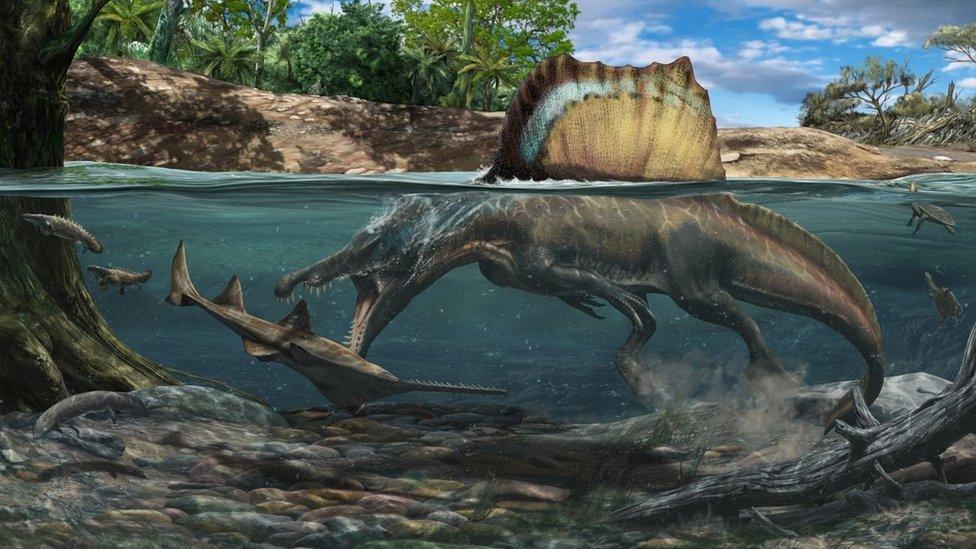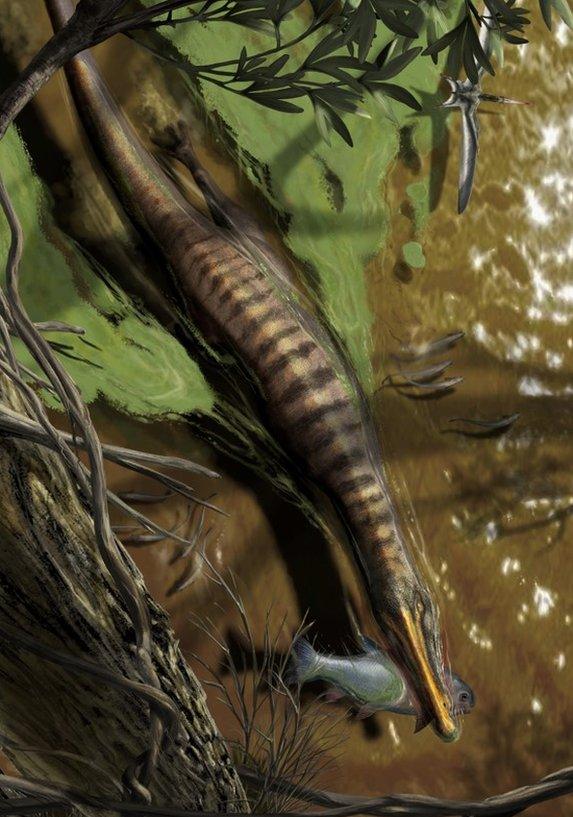Spinosaurus dinosaur 'hunted underwater', new research finds
- Published

The Spinosaurus had dense bones that allowed it to submerge itself to hunt, palaeontologists say
The density of the bones of the largest ever carnivorous dinosaur prove that it hunted underwater, researchers say.
A new paper explains how the Spinosaurus and its close relative Baryonyx had dense bones that allowed them to submerge themselves to hunt.
"The bones don't lie," according to Portsmouth University palaeontologist Dr Nizar Ibrahim.
Scientists have debated whether Spinosaurus pursued prey in the water, or snapped it up in the shallows.
For the latest research published in Nature, external, a team including Dr Ibrahim and lead author Dr Matteo Fabbri from Chicago's Field Museum compared femur and rib bone cross-sections from 250 species of extinct and living animals.
They included seals, whales, elephants, penguins, hippos, alligators, mice, hummingbirds, mosasaurs and plesiosaurs.
Subsequently the scientists claim to have found a clear link between bone density and aquatic foraging behaviour.
The animals that submerged themselves underwater to find food had bones that were almost completely solid throughout, while the bones of land-dweller had hollow centres.
Dense bone is believed to help with buoyancy control.

The Baryonyx, the UK close relative of the Spinosaurus, has similar characteristics
Previous research at Portsmouth University on Spinosaurus teeth also pointed to it being an "enormous river-monster".
Dr Ibrahim, who unearthed parts of a Spinosaurus skeleton in North Africa's Sahara Desert in 2014, described it as having retracted nostrils, short hind legs, paddle-like feet and a fin-like tail.
He said: "We battled sandstorms, flooding, snakes, scorpions and more to excavate the most enigmatic dinosaur in the world and now we have multiple lines of evidence all pointing in the same direction - the skeleton really has water-loving dinosaur written all over it."
Spinosaurus aegyptiacus remains were first discovered about 100 years ago in Egypt.
They were moved to a museum in Munich but destroyed during World War Two.
Since then only fragments of Spinosaurus bones have been found.
The dinosaur has enjoyed wider notoriety since 2001, when it bested a Tyrannosaurus rex in Jurassic Park III.
Its UK cousin the Baryonyx was found in Surrey, external in the 1980s.

Follow BBC South on Facebook, external, Twitter, external, or Instagram, external. Send your story ideas to south.newsonline@bbc.co.uk, external.
Related topics
- Published29 September 2021

- Published23 September 2020
